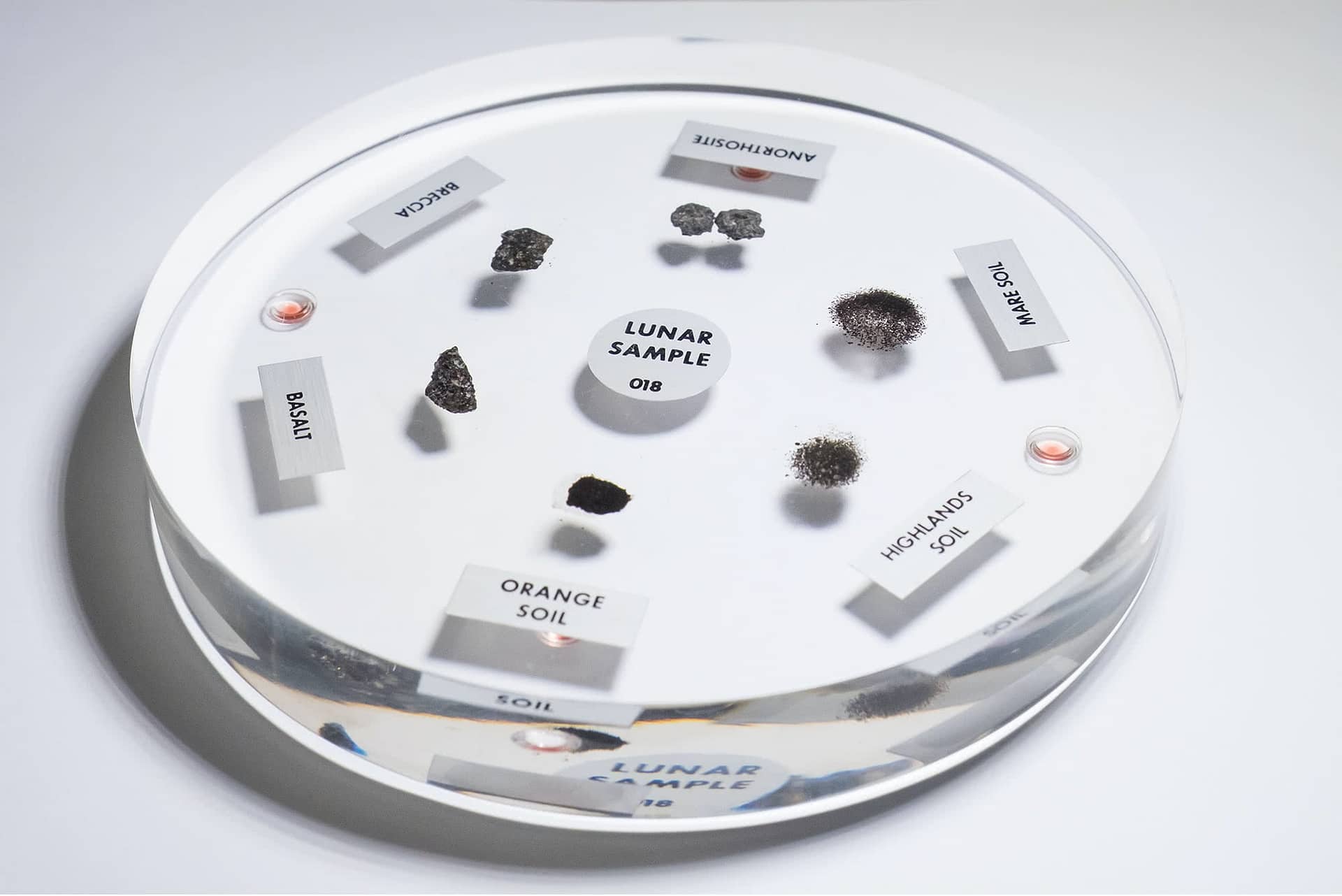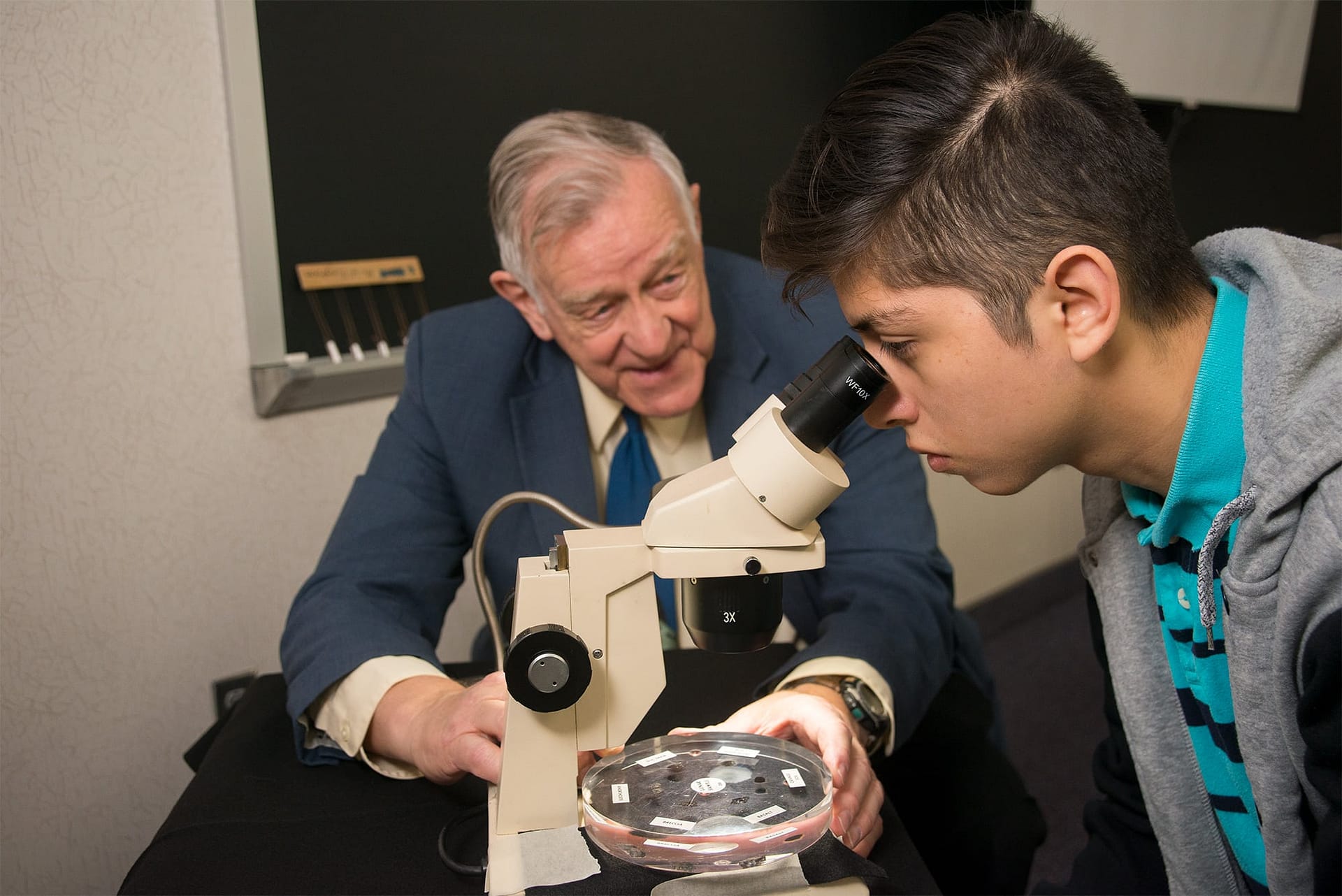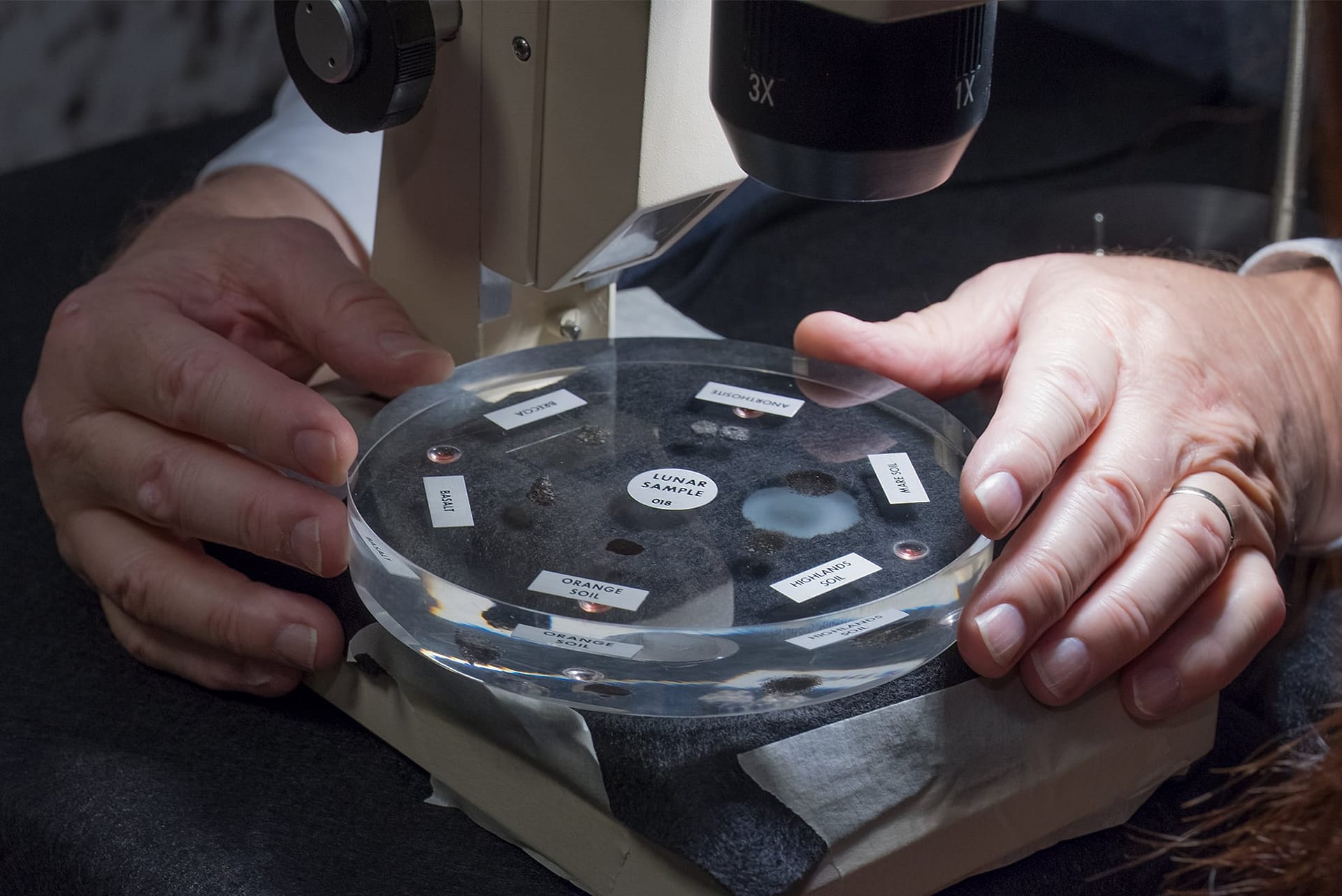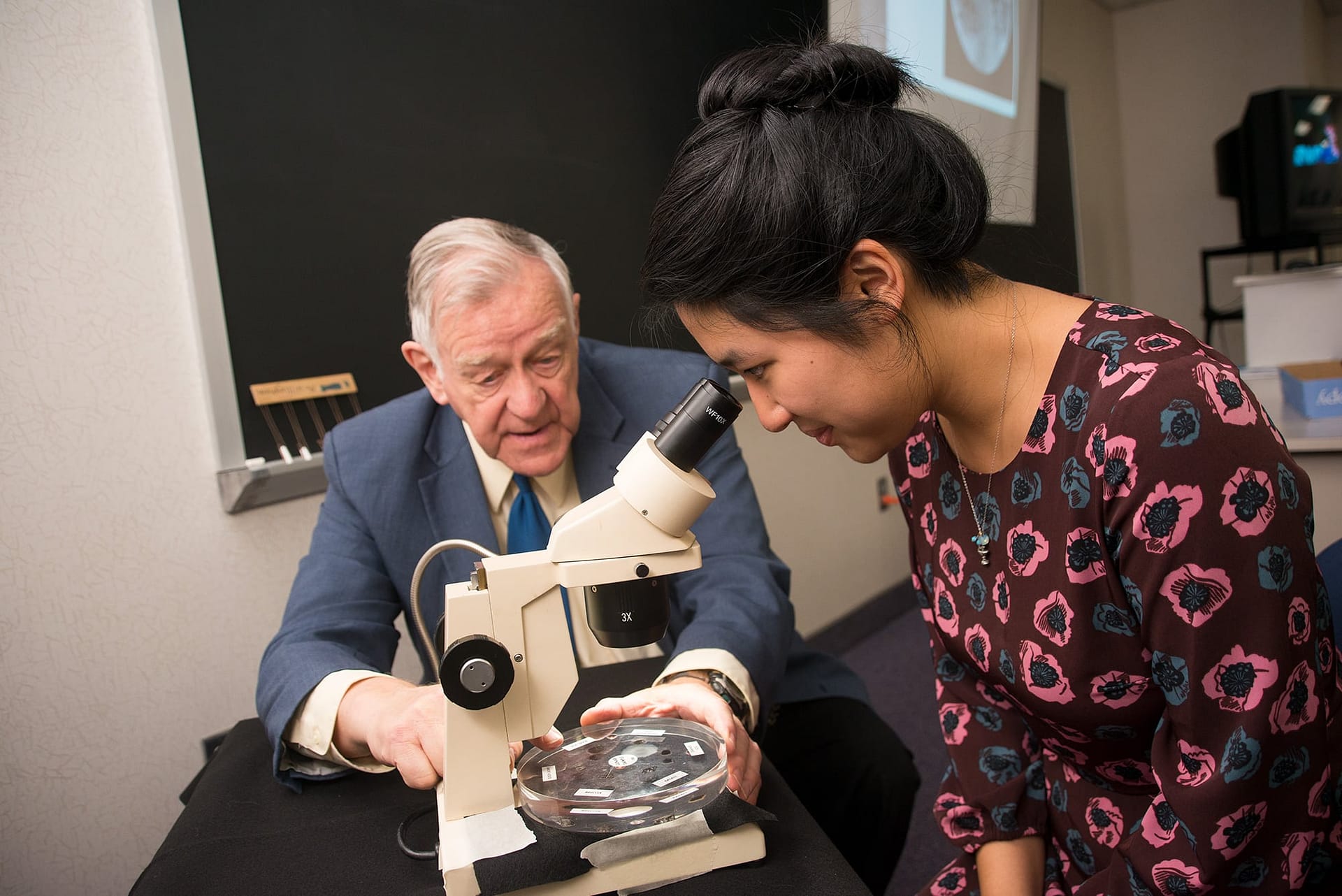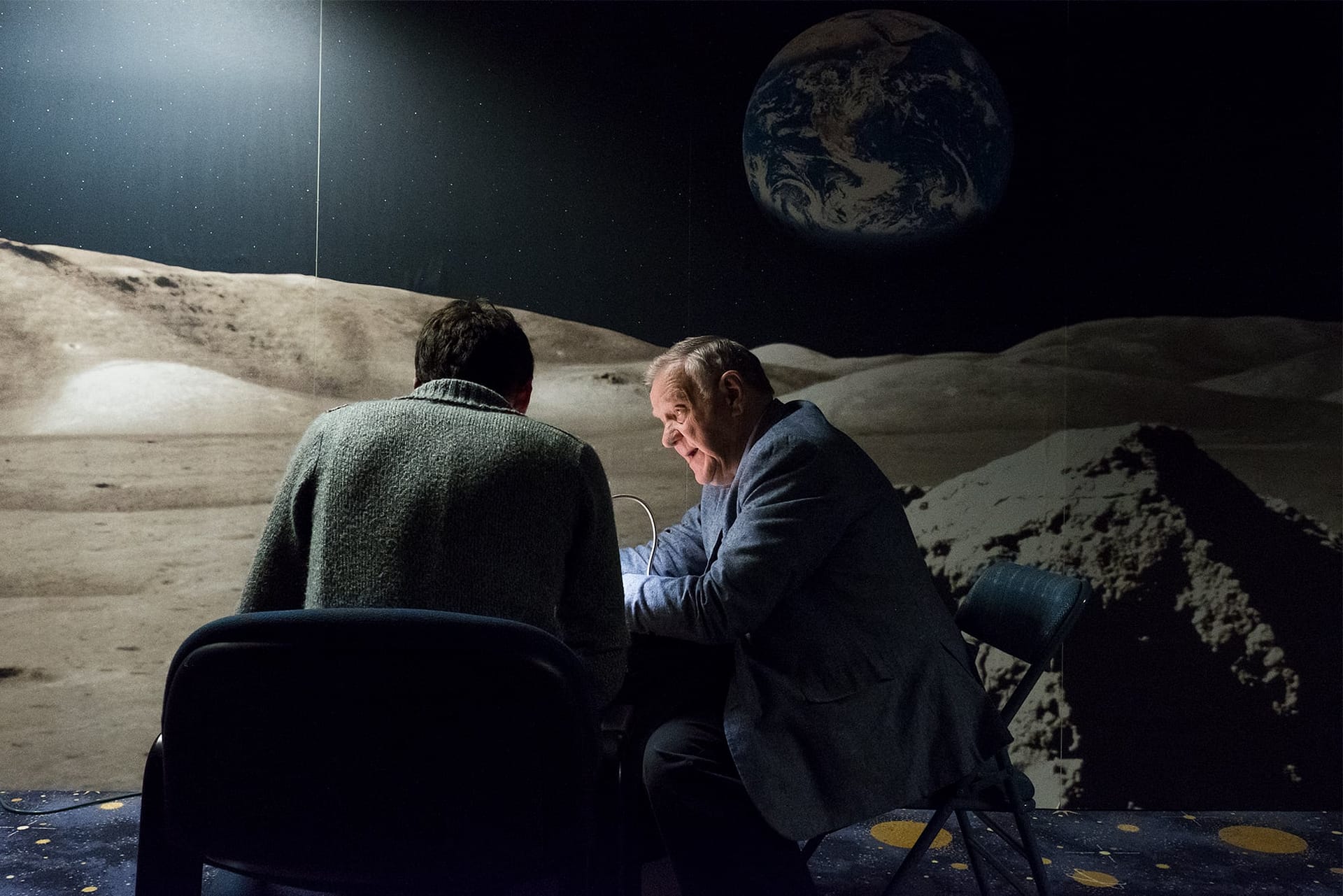When astronaut Charlie Duke, the tenth and youngest man to walk on the moon, returned from his Apollo 16 mission, he said, “It had a stark beauty about it. The moon to me was incredibly beautiful.” But six years later, after he gave his heart to Jesus, he said, “Walking on the moon was three days, but walking with Jesus is forever.”
For Christians, the lunar samples that Duke and his team collected from the moon have special bearing. “The samples had enough information for scientists to destroy every theory of the evolution of the moon,” said Pensacola Christian College natural sciences faculty Arnie Nelson.
In Nelson’s astronomy class (SC 141) and PCC’s Planetarium, these lunar samples were exhibited. Students had the opportunity to analyze the samples up close in class, using a binocular microscope.
Each student examined highland soil (Apollo 16) and maré soil (Apollo 17)—the soils that make the “man in the moon”—as well as breccia (Apollo 14), anorthosite rocks (Apollo 16), basalt soil (Apollo 17), and orange soil (Apollo 17).

“It was so neat to see something that is so far away in space underneath a microscope in a classroom!” said astronomy student Grace Shaffer (Sr., CA). “It’s not every day that NASA sends samples of the moon to your doorstep.”
The lunar samples disk loaned to the College was a rare treat—something offered only to faculty with special government permission. Fortunately, Nelson’s certification from 1978 was still valid. He chuckled, “Once certified, always certified.” Nelson was excited to have these samples for his students “because many of my students will meet people who don’t even believe that men landed on the moon.”

Another astronomy student, Olivia Hess (Jr., FL), tremendously appreciated the opportunity to see the samples. “As someone who went to public school for thirteen years, I knew very little about space,” she said. “Astronomy is very rarely taught from a Christian perspective. The more Christians learn about God and everything He has created, including space, the more we are able to share with unbelievers. It really brings into perspective how much God cares.”
As Mr. Nelson talked one-on-one with each student and showed them the lunar samples, he took the opportunity to elaborate on God’s protection as he pointed out a melted glass bead. “The glass bead shows the melted moon,” he said, explaining to the class how the moon literally melts each time a shooting star or meteor hits it because it doesn’t have the protection to its surface like the earth. “This is evidence that God doesn’t protect the moon from meteors as He protects the earth—God cares about us. The moon and stars declare the glory of God!”

